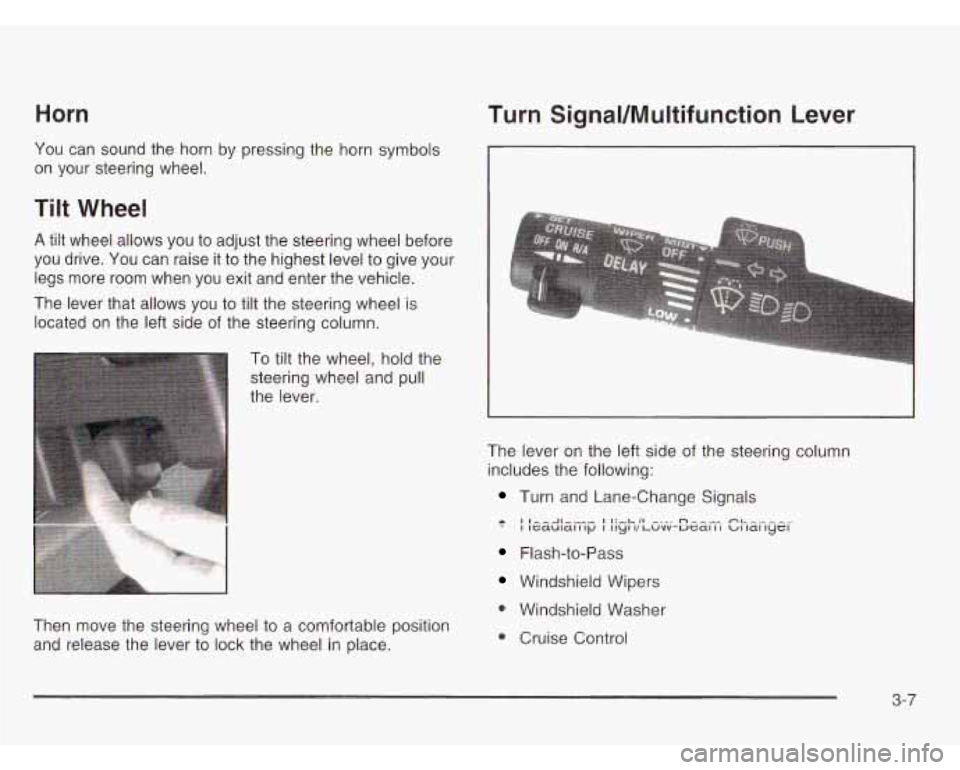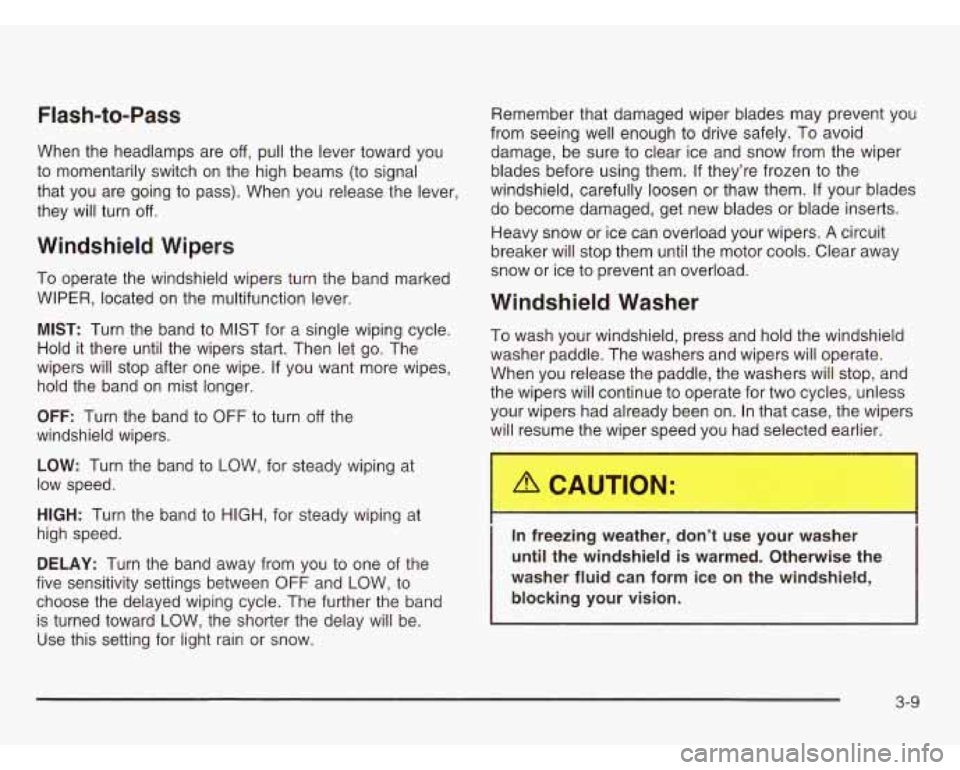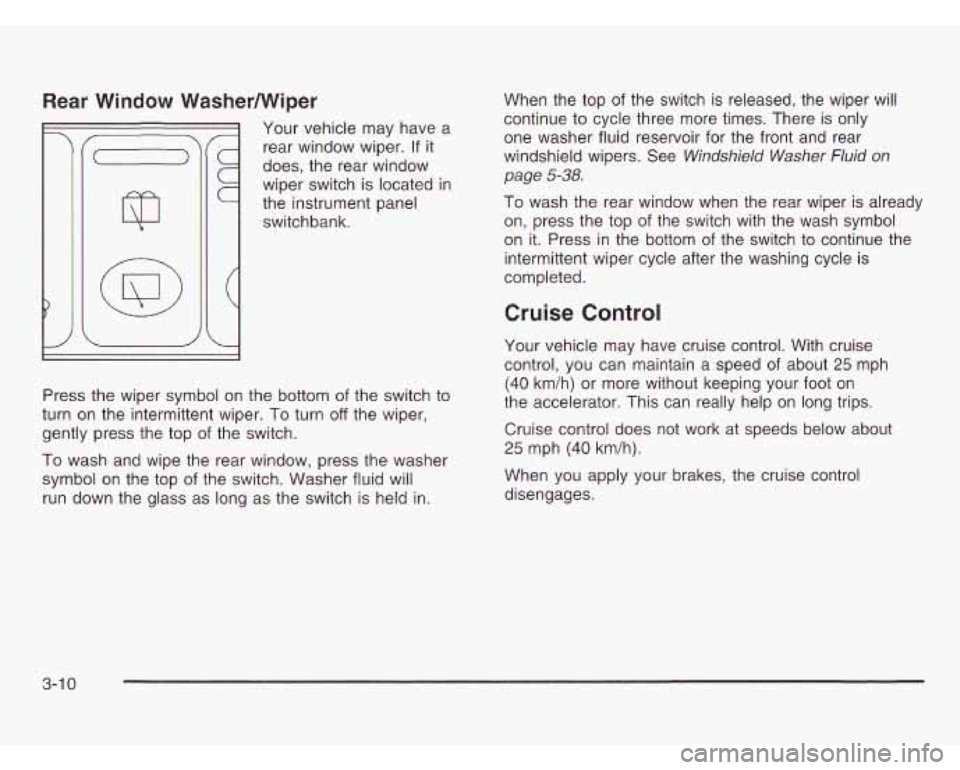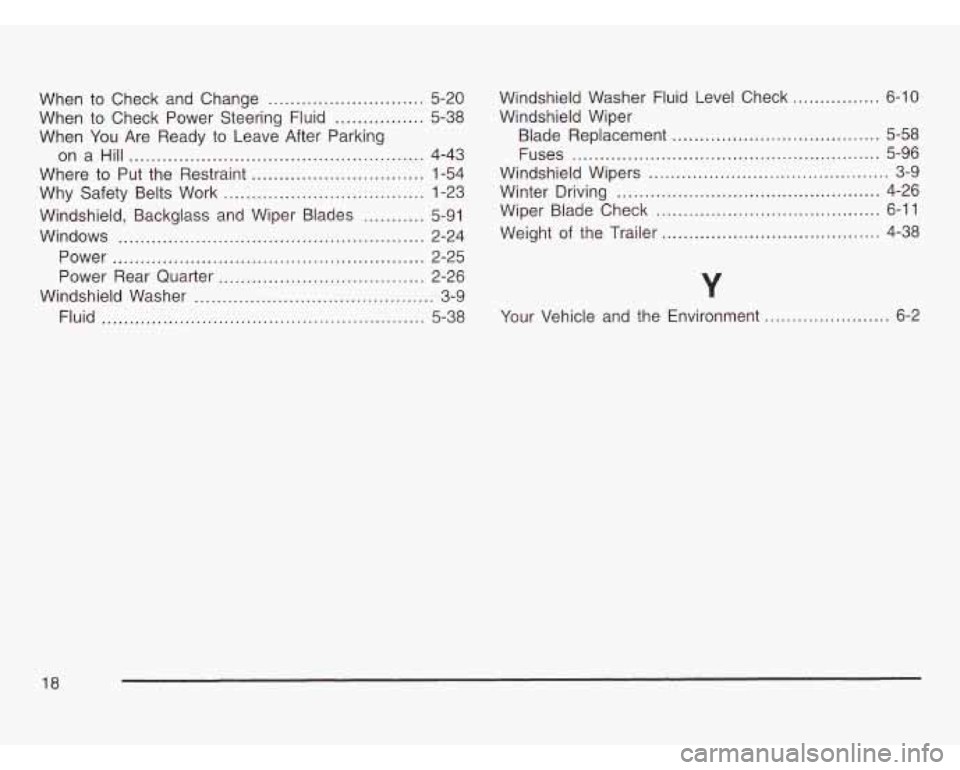windshield wipers OLDSMOBILE SILHOUETTE 2003 Owners Manual
[x] Cancel search | Manufacturer: OLDSMOBILE, Model Year: 2003, Model line: SILHOUETTE, Model: OLDSMOBILE SILHOUETTE 2003Pages: 466, PDF Size: 21.55 MB
Page 164 of 466

Horn
You can sound the horn by pressing the horn symbols
on your steering wheel.
Tilt Wheel
A tilt wheel allows you to adjust the steering wheel before
you drive. You can raise it to the highest level to give your
legs more room when you exit and enter the vehicle.
The lever that allows you to
tilt the steering wheel is
located on the left side of the steering column.
To tilt the wheel, hold the
steering wheel and pull
the lever.
Turn SignaVMultifunction Lever
Then move the steering wheel to a comfortable position
and release the lever to lock the wheel in place.
1
The lever on the left side of the steering column
includes the following:
Turn and Lane-Change Signals
I I--AI--- I 1:-L II -... n--- -I -_I_._.I I leaulal I ~p I IIYI II Luvv-ucal I I UI la1 lyt-I
Flash-to-Pass
Windshield Wipers
0 Windshield Washer
0 Cruise Controi
3-7
Page 166 of 466

Flash-to-Pass
When the headlamps are off, pull the lever toward you
to momentarily switch on the high beams (to signal
that you are going to pass). When you release the lever,
they will turn
off.
Windshield Wipers
To operate the windshield wipers turn the band marked
WIPER, located on the multifunction lever.
MIST: Turn the band to MIST for a single wiping cycle.
Hold it there until the wipers start. Then let
go. The
wipers will stop after one wipe.
If you want more wipes,
hold the band on mist longer.
OFF: Turn the band to
OFF to turn off the
windshield wipers.
LOW: Turn the band to LOW, for steady wiping at
low speed.
HIGH: Turn the band to HIGH, for steady wiping at
high speed.
DELAY: Turn the band away from you to one of the
five sensitivity settings between
OFF and LOW, to
choose the delayed wiping cycle. The further the band
is turned toward LOW, the shorter the delay will be.
Use this setting tor light rain or snow. Remember that damaged
wiper blades may prevent you
from seeing well enough to drive safely. To avoid
damage, be sure to clear ice and snow from the wiper
blades before using them.
If they’re frozen to the
windshield, carefully loosen or thaw them. If your blades
do become damaged, get new blades or blade inserts.
Heavy snow or ice can overload your wipers.
A circuit
breaker will stop them until the motor cools. Clear away
snow or ice to prevent an overload.
Windshield Washer
To wash your windshield, press and hold the windshield
washer paddle. The washers and wipers will operate.
When you release the paddle, the washers will stop, and
the wipers will continue
to operate for two cycles, unless
your wipers had already been on. In that case, the wipers
will resume the wi--
- r speed you had selected earlier.
I I
In freezing weather, don’t use your washer
until the windshield is warmed. Otherwise the
washer fluid can form ice on the windshield,
blocking your vision.
3-9
Page 167 of 466

Rear Window WasherNViper
Your vehicle may have a
rear window wiper. If it
does, the rear window
wiper switch is located
in
the instrument panel
switchbank.
i
1
Press the wiper symbol on the bottom of the switch to
turn on the intermittent wiper.
To turn off the wiper,
gently press the top of the switch.
To wash and wipe the rear window, press the washer
symbol on the top of the switch. Washer fluid will
run down the glass as long as the switch is held in. When
the top
of the switch is released, the wiper will
continue to cycle three more times. There is only
one washer fluid reservoir for the front and rear
windshield wipers. See
Windshield Washer Fluid on
page
5-38.
To wash the rear window when the rear wiper is already
on, press the top
of the switch with the wash symbol
on it. Press in the bottom of the switch to continue the
intermittent wiper cycle after the washing cycle is
completed.
Cruise Control
Your vehicle may have cruise control. With cruise
control, you can maintain a speed of about
25 mph
(40 km/h) or more without keeping your foot on
the accelerator. This can really help on long trips.
Cruise control does not work at speeds below about
25 mph (40 km/h).
When you apply your brakes, the cruise control
disengages.
3-1 0
Page 365 of 466

Windshield Wiper Blade
Replacement
Windshield wiper blades should be inspected at least
twice a year for wear or cracking. See “Wiper Blade
Check
in At Least Twice a Year on page 6-10 for
more information.
Replacement blades come
in different types and are
removed in different ways. For proper type and length,
see
Normal Maintenance Replacement Parts on
page
5- 105.
To remove the windshield wiper blade(s):
1. Turn the wipers on to the lowest intermittent setting.
2. Turn the ignition to OFF while the wipers are at
3. Pull the windshield wiper arm away from the
the outer position
of the wipe pattern.
windshield or backglass.
4. While holding the
wiper arm away from
the glass, push
the release clip from
under the blade.
5-58
Page 463 of 466

When to Check and Change ............................ 5-20
When to Check Power Steering Fluid
................ 5-38
When You Are Ready to Leave After Parking
on a Hill
..................................................... 4-43
Where to Put the Restraint
............................... 1-54
Why Safety Belts Work .................................... 1-23
Windshield, Backglass and Wiper Blades
........... 5-91
Windows ....................................................... 2-24
Power
........................................................ 2-25
Power Rear Quarter
..................................... 2-26
Windshield Washer
........................................... 3-9
Fluid
.......................................................... 5-38 Windshield
Washer Fluid Level Check
............ 6-10
Windshield Wiper
Blade Replacement
.................. ........ 5-58
Fuses
........................................................ 5-96
Windshield Wipers
............................................ 3-9
Winter Driving
................................................ 4-26
Wiper Blade Check
..................... ............ 6-11
Weight of the Trailer
........................................ 4-38
Your Vehicle and the Environment
....................... 6-2
18